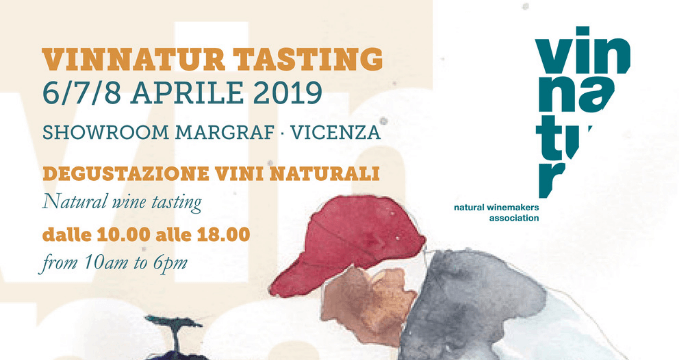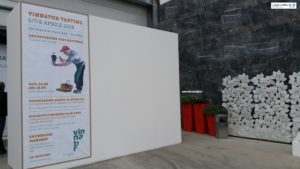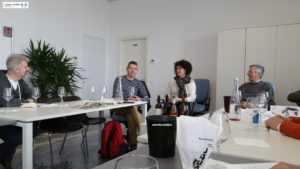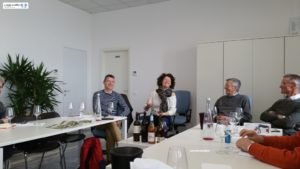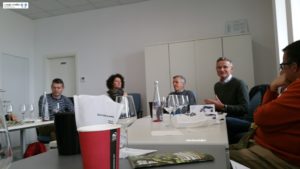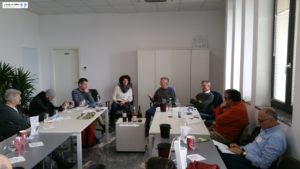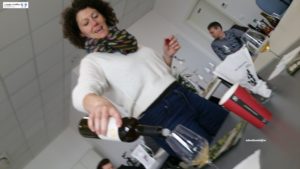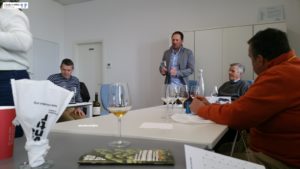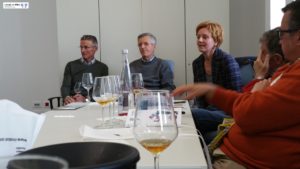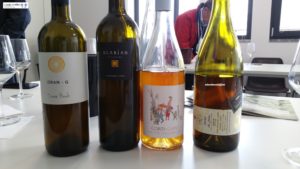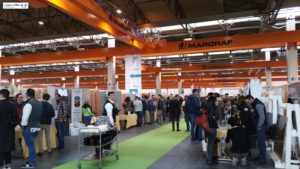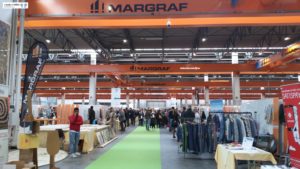Vinnatur l’evento che unisce produttori che non considerano utile l’utilizzo dei pesticidi, che studiano l’unicità dei vitigni e dei vigneti, il loro ambiente naturale di sviluppo e l’equilibrio entomologico a sentinella della sanità degli interventi. Un gran lavoro di ricerca, osservazione e di scambio di esperienze lunghe una vita. Viticoltori spesso molto piccoli, ma tenaci e molto preparati.
Vinnatur the event that unites producers who do not consider the use of pesticides useful, who study the uniqueness of vines and vineyards, their natural environment of development and the entomological balance as a sentinel of the health of intervention. A great job of research, observation and exchange of long life experiences. Wine growers often very small, but tenacious and very prepared.
Master Class Orange Wine
Nel dopoguerra, questo tipo di vinificazione sembrava essere dimenticata, poi negli anni 90 sembrava rifiorire nell’area Collio, in Friuli al confine con la Slovenia, grande ripresa anche in Georgia (Russia). Le macerazioni sono affini alle alte temperature, ai vini rossi del sud, in nord Europa, poche tracce. Negli anni ‘70 in Italia si afferma la moda dei vini bianchi, ultra filtrati e decolorati, praticamente demoliti. Per fortuna negli anni ‘80 si avverte l’esigenza di avere vini da uve più riconoscibili e gli enologi utilizzano pressature più soffici e mosto fiore. La vera rivoluzione si ha nel 2000, con l’estrazione dalle bucce , polpa, vinaccioli e raspo, il meglio possibile, con consapevolezza del peggio da evitare. Vinificare sulle bucce anche i vini bianchi è ottenere anche la migliore espressione del “terroir”, perché non farlo? La macerazione dà luogo a molte differenze e risultati con evoluzioni crescenti rapide, con rapidi decadimenti finali sul tannino e l’amaro, risultati gratificanti, ma non proprio per tutti, un nuovo capitolo, una rivoluzione.
After the war, this type of winemaking seemed to be forgotten, then in the 90s it seemed to flourish in the Collio area, in Friuli on the border with Slovenia, a great recovery also in Georgia (Russia). Macerations are related to high temperatures, to southern red wines, in northern Europe, few traces. In the 70s in Italy the fashion of white wines is asserted, ultra filtered and bleached, practically demolished. Fortunately, in the 80s there was a need to have wines with more recognizable grapes, and winemakers used softer presses and free-run must. The real revolution took place in 2000, with the extraction from the skins, pulp, grape seeds and stems, the best possible, with awareness of the worst to avoid. Making white wines also on the skins is also getting the best expression of the “terroir”, why not do it? The maceration gives rise to many differences and results with rapid increasing evolutions, with rapid final decay on the tannin and the bitter, gratifying results, but not really for everyone, a new chapter, a revolution.
Delfini macerati 🙂

